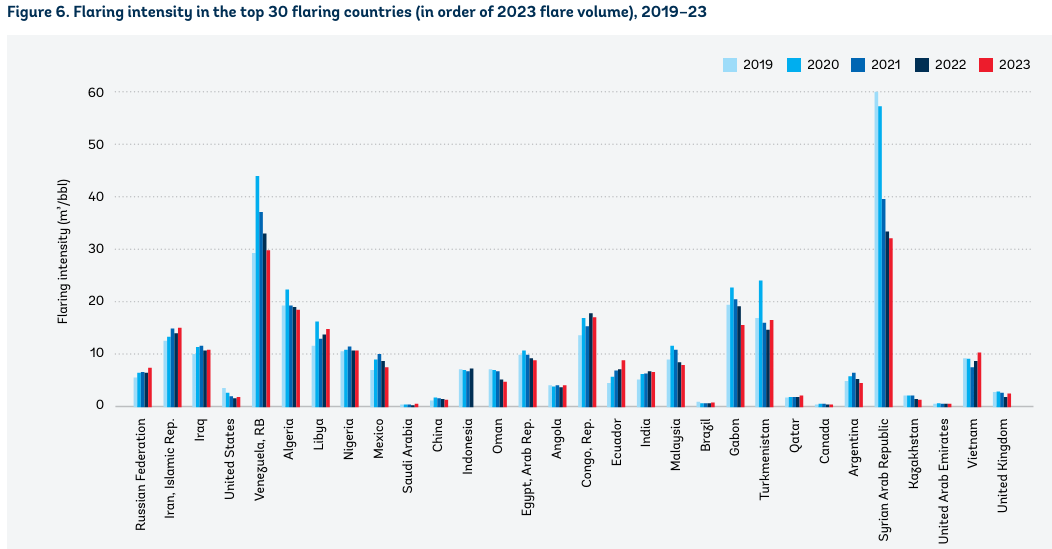Want less flaring? Support the US oil industry
Its flaring intensity has greatly improved since 2019 and is now one of the lowest
The World Bank has just published the June 2024 edition of its Global Gas Flaring Tracker Report. The report shows just how well US oil and gas companies do compared to the rest of the world and, as we have previously highlighted, how much they have improved their practices over the past few years.
The first good news — when looking at flaring intensity (i.e. how much natural gas is burned per barrel of oil produced), the US is one of greenest producers.

In 2023, the US flared 2.0 cubic meters of natural gas per barrel of oil it produced. This compares very favorably to most countries, including Russia (7.7) and Iran (15.4), and to the world average (4.8).
If world oil was produced with the same flaring intensity as in the US, 60% less natural gas would be flared, lowering annual CO2 emissions by about 220 million tons, or 0.6%1.
The second good news — US gas flaring intensity has decreased dramatically since 2019. It has gone done from about 3.8 cubic meters of natural gas flared per barrel of oil produced to 2.0, a decrease of 47%.
If you care about limiting the amount of CO2 and methane released in the atmosphere, support producers that flare less natural gas per barrel of oil. US oil and gas producers have one of the lowest flaring intensity, and they have made great progress since 2019.





Do we know why the drop in flaring intensity has slowed in the US?
I'd imagine technology/efficiency, relative price of nat gas, and transportation infrastructure all play a role in explaining the wide differences when looking country-by-country? What are other major factors?